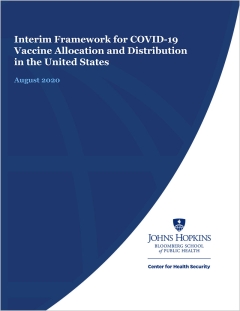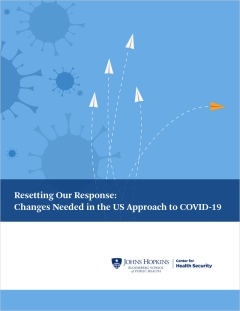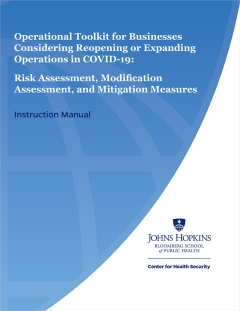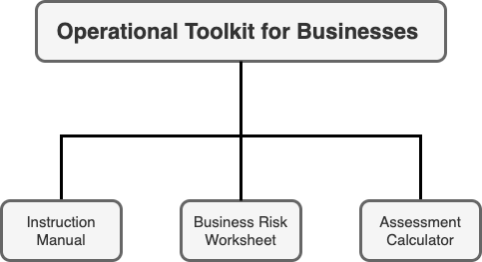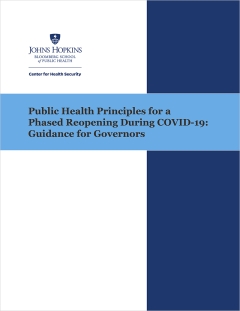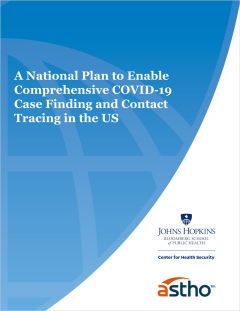This operational toolkit has been developed to help business owners who are considering reopening or expanding their operations to determine their establishments’ risk of transmission of COVID-19 and how to reduce it.
As displayed in the figure below, the Operational Toolkit consists of 3 parts: an instruction manual; a business risk worksheet; and an assessment calculator.
As some governments begin to lift strict public health measures and move into the next phase of their outbreaks of COVID-19, local, state, and federal authorities are planning for the gradual reopening of businesses and resumption of economic activity. While planning for a staged approach to business resumption must be coordinated by local, state, and federal authorities, individual organizations should start planning for how they will restart or expand their operations so that modification and mitigation measures will already be in place when work can resume and the new ”business as usual” can commence.
This operational toolkit allows business leaders to work through a 4-stage process to obtain an overall risk score for their business and to identify considerations for reducing both operational and individual level risks posed by COVID-19. The overall score represents the inherent risk of exposure to COVID-19 that may occur in a business and possible changes to daily operations and policies that can lower the inherent risk of exposure. This toolkit is intended to provide businesses with a starting point in their planning to reopen or expand their operations by identifying their risk levels for contributing to the spread of COVID-19 and providing them with a list of mitigation measures to implement that will increase the safety of their employees, clients, customers, and community.
The 3 parts of the Operational Toolkit include:
- An Instruction Manual (PDF)
Instructions that explain how to complete the 4-stage Business Risk Worksheet and Assessment Calculator.
- A Business Risk Worksheet (PDF)
A 4-stage step-by-step worksheet for you to report and understand your business’s overall risk of spreading COVID-19 and how your business operations can be made safer.
- An Assessment Calculator (XLSX)
An Excel spreadsheet you will fill out to receive a calculated risk score and a modification score.


